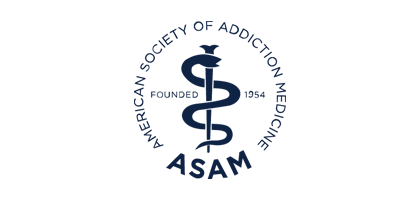Blog
Seizing the Moment to Improve Addiction Treatment
Because addiction treatment is front and center on the national agenda as a result of the devastating prescription opioid and heroin epidemic, this is a moment of great opportunity for ASAM and for the patients suffering from addiction, whom we serve.
The widespread expansion of access to addiction treatment produced by the Mental Health Parity and Addiction Equity Act and the Affordable Care Act support for more addiction treatment forces the recognition of two long-neglected challenges: First, while abstinence (i.e., stopping alcohol and other drug use) is commonly the goal of treatment it is seldom achieved for long, making relapse the most common outcome of treatment. Second, there is an open war within treatment between those who support medication-assisted treatment (MAT) with methadone, buprenorphine and naltrexone and those who support treatment without medications. Both problems need to be addressed for ASAM and our nation to take full advantage of the rapidly rising public support for addiction treatment. The path to a resolution of these problems is found in the recognition of “stable recovery” as the defining goal of all addiction treatment, whether or not the treatment uses medications.
What is “recovery” and how long must it exist to be considered “stable”? Is recovery possible for addiction in general and in particular for opioids, including heroin? Within ASAM we have abundant evidence to answer these questions because we have many ASAM member physicians who are in stable recovery – some of them from prolonged and severe opioid dependence including intravenous opioid use. Further, we have evidence from four decades of work by the state physician health programs (PHPs) including numerous studies describing the PHP system of care management and the remarkable outcomes. Recovery means no use of alcohol, marijuana or other or other potentially addictive drugs. But it also means more: building a life of integrity, connection to others, and serenity. Recovery is fully compatible with the use of medications as prescribed, including methadone, buprenorphine and naltrexone. The pioneering work underway at Hazelden Betty Ford Foundation for the past three years shows that these medicines can be successfully integrated into an abstinence-based recovery-oriented treatment program.
Today addiction treatment is virtually all short-term while the disease of addiction is a life-long threat. The risk of relapse remains even after years of stable recovery. Recovery can be thought of as a “remission” of the symptoms of the disease of addiction, not its elimination. Although MAT is commonly conceptualized as analogous to the use of insulin in the treatment of diabetes (i.e., for the life of the patient), most patients leave MAT within a few months and the very large majority leave within a few years. What happens to patients who leave MAT? Most patients relapse to opioid and other drug use, often quite quickly. Treatments not using medications typically hold onto patients for even shorter periods of time and show similar high relapse rates following discharge.
The future of addiction treatment depends on the adoption of the long-term recovery standard to assess the effectiveness of our addiction treatments. Based on the success of the state PHPs which typically retain patients in care management for five years, I have proposed a Five-Year Recovery Standard, analogous to the five-year survival standard used in cancer treatment. How good are today’s substance use disorder treatment programs at producing successful recovery for five years? The question answers itself – “not very good.” Of course there are many other ways to measure treatment success, including those commonly used by MAT programs, e.g., reductions in HIV and Hepatitis C infections, overdose deaths and crime, as well as increases in employment. The evidence of success in these areas, valuable as it is, is restricted to the time the patient is taking the medicine and it is not complete. The risk of negative events does not go to zero; it is merely “reduced” by the treatment while patients stay in MAT. It is important to recognize that patients who use medications as they are prescribed, including methadone and buprenorphine, can be considered to be in recovery as long as they are not using alcohol or other drugs nonmedically.
For the future of addiction treatment, it is important for our field to embrace the capstone criteria of success as the ability to produce stable recovery. Like the disease control monitoring done of patients with other chronic disorders (e.g., HGB-A1C for diabetes), it is necessary to closely monitor the disease of addiction with drug and alcohol testing and follow-up with patients.
When the five-year recovery standard is adopted for all the diverse addiction treatment programs there will be a level playing field on which all treatment can compete. This competition, and the publication of outcome results using this standard, will permit not only better choices by insurers and patients but it will also stimulate significant innovation to improve five-year outcomes for all addiction treatment.
The five-year standard will also reduce the self-destructive battles between MAT and drug-free treatment as all treatments for substance use disorders compete for the best outcomes in the long-term interest of addicted patients, their families and their communities. This is a goal that all can adopt and cheer. It is an understandable and measureable outcome that everyone cannot just understand but celebrate. This will require MAT to reach beyond assessment of effectiveness that is limited to the time the patient is taking medicine and limited also by the partial nature of the achievements. It will also require the drug-free treatment opponents of MAT to welcome the use of medications as an aid in helping some addicted patients become and stay drug-free. Neither of these changes will be easy but both are necessary for ASAM and for the success of addiction treatment.
ASAM, the home of addiction medicine, has within its diverse membership abundant, valuable experience with recovery. ASAM can bring the diverse addiction treatments together behind this newly defined ultimate objective. This unity of purpose can end the self-destructive disputes now being waged by MAT and entirely psychosocial treatments and ensure that our field seizes this precious moment of national attention to build better addiction treatment. The uniquely human health problem of addiction to alcohol and other drugs will not be eliminated; however, even with such a united purpose. But the current deadly epidemic can be turned back and the life sustaining promise of addiction medicine can be achieved far more effectively for far more patients than is true today.
All treatments work for some people. No one treatment works for everyone.

For over 40 years, Robert L. DuPont, MD has been a leader in drug abuse prevention and treatment. He was the first Director of the National Institute on Drug Abuse (1973-1978) and the second White House Drug Chief (1973-1977). From 1968-1970 he was Director of Community Services for the District of Columbia Department of Corrections. From 1970-1973, he served as Administrator of the District of Columbia Narcotics Treatment Administration. In 1978 he became the founding President of the Institute for Behavior and Health, Inc. He has been Clinical Professor of Psychiatry at the Georgetown University School of Medicine since 1980. He is a Distinguished Fellow of the American Society of Addiction Medicine and Life Fellow of the American Psychiatric Association. Dr. DuPont's signature role throughout his career has been to focus on the public health goal of reducing the use of illegal drugs. |

